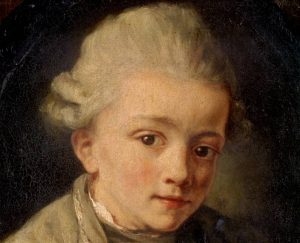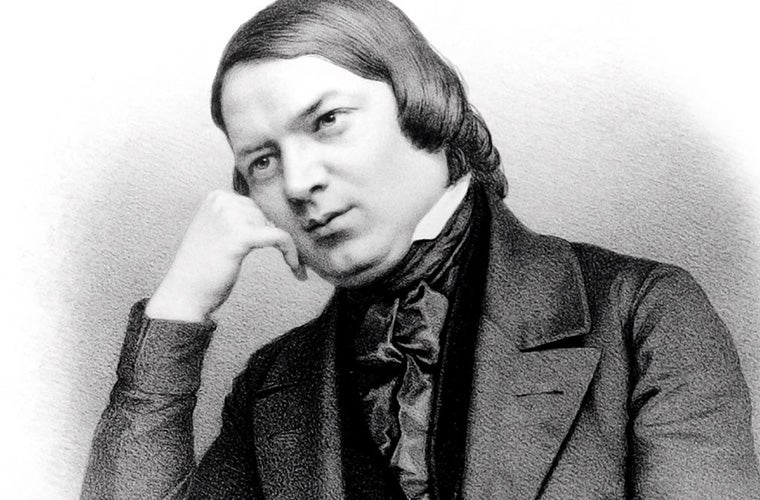Anniversary Concert
Our 70th anniversary concert presents works from the same composers as our first ever performance way back in 1954, presenting a rich tapestry of the Romantic and Classical tradition.
16th November 2024 at 7:00pm
St Paul’s Church, 64 Grove Park Road, Chiswick W4 3SB
Brahms: Piano Concerto No. 1
Soloist: Daniel Evans
Mozart: Exsultate Jubilate
Soloist: Ellie Neate
Schumann: Symphony No. 4
Johannes Brahms - Piano Concerto No. 1 in D minor, Op. 15
Johannes Brahms’s Piano Concerto No. 1 in D minor, Op. 15, marks a significant milestone in his career. Composed between 1854 and 1858, this concerto evolved from a symphonic sketch, reflecting Brahms’s ambitious attempt to integrate the piano with the orchestra on equal terms. The work was written during a tumultuous period in Brahms’s life, notably influenced by the death of his close friend and mentor, Robert Schumann, and his complex relationship with Clara Schumann.
Premiered in Hanover in 1859, the concerto initially received a lukewarm reception but has since become a staple of the piano concerto repertoire. Its blend of symphonic grandeur and pianistic virtuosity showcases Brahms’s mastery of form and deep emotional expressiveness.

I Movement: Maestoso – The first movement opens with a dramatic orchestral introduction, setting a tone of solemnity and intensity. The initial theme, introduced by the strings and timpani, is characterized by its broad, sweeping lines and dramatic tension. The piano’s entrance is equally assertive, with powerful chords that echo the orchestra’s themes. This movement is marked by its complex interplay between the soloist and the orchestra, featuring extensive thematic development and intricate counterpoint. The dialogue between the piano and orchestra explores a wide emotional range, from stormy outbursts to moments of lyrical introspection.
II Movement: Adagio – The second movement, Adagio, provides a stark contrast with its serene and contemplative character. Brahms described this movement as a “gentle portrait” of Clara Schumann, and its tender, hymn-like themes reflect a deep sense of love and reverence. The orchestration is delicate, with the strings often providing a soft, supportive cushion for the piano’s lyrical passages. This movement highlights Brahms’s gift for melodic writing and his ability to convey profound emotion through simplicity and restraint.
III Movement: Rondo – Allegro non troppo – The final movement is a spirited Rondo, marked by its rhythmic drive and exuberance. The main theme is lively and dance-like, with a rhythmic vitality that propels the movement forward. The piano and orchestra engage in a lively and playful dialogue, with the piano displaying virtuosity through rapid scales, arpeggios, and intricate passagework. The movement features contrasting episodes, including a more lyrical and expressive middle section, before returning to the jubilant main theme. The concerto concludes with a triumphant coda, bringing the work to a thrilling and energetic close.
Wolfgang Amadeus Mozart - "Exsultate, Jubilate," K. 165 (First and Last Movements)
Mozart composed “Exsultate, Jubilate,” K. 165, in 1773 during his third visit to Milan. This motet was written for the celebrated castrato Venanzio Rauzzini, who was also the lead singer in Mozart’s opera “Lucio Silla.” The work exemplifies Mozart’s extraordinary ability to write for the human voice, combining technical brilliance with expressive beauty. The text, of unknown authorship, is a hymn of praise and joy, fitting perfectly with the festive and exuberant character of the music.

I Movement: Allegro – The motet opens with an “Allegro” that immediately establishes a jubilant and celebratory atmosphere. The orchestra introduces a lively and energetic theme, which the soloist then elaborates with virtuosic passages and soaring melodies. The vocal line is characterized by its florid ornamentation, showcasing the singer’s agility and expressive range. This movement embodies the spirit of exultation, with its bright tonality and rhythmic vitality.
IV Movement: “Alleluia – The final movement is a virtuosic tour de force that has become one of Mozart’s most beloved vocal pieces. The movement is a continuous stream of rapid notes and intricate runs, requiring exceptional breath control and agility from the soloist. The repeated “Alleluia” theme is both triumphant and exultant, capturing the essence of joy and celebration. The movement’s brilliance and technical demands make it a favorite showcase for sopranos, providing a dazzling conclusion to the motet.
Robert Schumann - Symphony No. 4 in D minor, Op. 120
Robert Schumann’s Symphony No. 4 in D minor, Op. 120, is one of his most innovative and forward-looking works. Originally composed in 1841, shortly after his marriage to Clara Wieck, the symphony was extensively revised in 1851. This revision, which Schumann regarded as the definitive version, is the one most commonly performed today. The symphony is notable for its cyclic structure, with themes from the opening movement reappearing in later movements, creating a sense of unity and coherence.

I Movement: Ziemlich langsam – Lebhaft – The symphony begins with a slow introduction (“Ziemlich langsam”) that unfolds mysteriously, featuring a theme that recurs throughout the symphony. This introduction leads seamlessly into the main section (“Lebhaft”), a lively and energetic movement characterized by its rhythmic drive and dramatic contrasts. The themes are developed extensively, with intricate counterpoint and dynamic interplay between the different sections of the orchestra. The movement concludes with a return to the opening theme, creating a sense of circularity and coherence.
II Movement: Romanze: Ziemlich langsam – The “Romanze” is a lyrical and intimate movement, featuring a beautiful melody introduced by the oboe and cello. The orchestration is delicate and transparent, allowing the melody to shine. This movement is marked by its expressive depth and tender character, showcasing Schumann’s gift for melody and his ability to convey deep emotion through music. The central section features a more agitated theme, providing contrast before returning to the serene opening melody.
III Movement: Scherzo: Lebhaft – Trio – The “Scherzo” is vigorous and rhythmic, with a robust and energetic character. The main theme is characterized by its syncopated rhythms and dynamic contrasts. The “Trio” section provides a lyrical and flowing contrast, featuring a more relaxed and pastoral theme. The return of the “Scherzo” theme re-establishes the movement’s lively and dynamic mood, leading to a rousing conclusion.
IV Movement: Langsam – Lebhaft – The finale begins with a slow introduction that recalls themes from the earlier movements, creating a sense of unity and thematic coherence. The main “Lebhaft” section bursts forth with energy and enthusiasm, driven by a propulsive rhythm and dynamic orchestration. The themes are developed with great ingenuity, leading to a triumphant and exuberant conclusion. The symphony ends with a sense of resolution and triumph, reflecting Schumann’s optimistic vision and innovative approach to symphonic form.
Daniel Evans
Danny Evans, born in Norwich in 1988, developed a passion for music at an early age, influenced by his mother’s love for American country artists like Mary Chapin Carpenter and Nancy Griffith, as well as Irish folk tunes. At six, he began exploring the family piano, although its out-of-tune state delayed his development of perfect pitch. His first encounter with piano music was Bach’s C Major Prelude, which he initially knew by the title his mother gave it, “Erste Teil.”
Danny’s formal music education began at 10 under the guidance of the late Kenneth Ryder, where he discovered a deep love for Rachmaninoff. He later attended the prestigious Yehudi Menuhin School, studying with esteemed teachers Ruth Nye, Marcel Baudet, and Leslie Howard, before continuing his studies at the Royal Academy of Music. However, a complex back injury forced him to discontinue his piano studies, leading him to briefly pursue a degree in law.
Transitioning to a career in artist management, Danny’s first role in the music industry was with Universal Music. He then moved to New York to work for Columbia Artists (CAMI Music) from 2011 to 2018. During his time at CAMI, Danny was mentored by the renowned Ronald A. Wilford until his death in 2015, and had the privilege of working with prominent musicians, including Lang Lang, Jessye Norman, Ray Chen, Nigel Kennedy, Nicola Benedetti, and Sir Karl Jenkins. He also represented the Lord of the Rings ‘live with orchestra’ franchise.

In 2018, Danny co-founded Enote, a pioneering technology company in Berlin that develops artificial intelligence for music. Following this, he took a three-year sabbatical to focus on his recovery from a successful battle with Bipolar Disorder.
Danny now enjoys a varied working portfolio as a consultant for various organizations in the classical music and luxury goods sectors, including his ongoing work with Enote and his role at Knight Classical. Alongside his professional pursuits, he remains passionate about the piano and has returned to playing, with plans to record Glazunov’s sonatas and variations. He also dedicates time to raising awareness and support for mental health, frequently speaking publicly and serving as an ambassador for Bipolar UK.
Danny resides in London with his wife, Alexandra, a music industry executive, and enjoys fine tailoring and trips to the zoo.
Ellie Neate
For the 24/25 season, Ellie will make debuts with Scottish Opera and Opera Holland Park as Sylviane in The Merry Widow, and at Opera North, where she will perform Papagena in The Magic Flute Lite. She will also give a salon recital with Opera Rara, and return to the English National Opera to cover Mabel in The Pirates of Penzance. So far this season she has covered Tytania in Britten’s A Midsummer Night’s Dream and Papagena with Opera North, and performed the role of Ellie in The Man in the Moon for the Family Sunday programme at the Royal Opera House.
Past opera engagements include Celia in Gilbert and Sullivan’s Iolanthe, Daughter 1 in Philip Glass’ Akhnaten and cover Elsie Maynard The Yeomen of the Guard at ENO, Elisa in Mozart’s Il Re Pastore, Lisa in Bellini’s La Sonnambula and Cleopatra in Hasse’s Marc’Antonio e Cleopatra for Buxton International Festival, Galatea Acis and Galatea, Milica Svadba and Maria Bertram Mansfield Park for Waterperry Opera Festival, Cunegonde Candide for Blackheath Halls Community Opera, and Gretel Hansel and Gretel for British Youth Opera, for which she won the Basil A Turner Award.
In concert Ellie has sung Adès’ Five Eliot Landscapes at Oxford Lieder Festival, with Nicky Spence and Julius Drake in a BBC Radio 3 broadcast from Wigmore Hall, Carmina Burana with the London Symphony Chorus in Barbican Hall, and for ENO does Eurovision. She is looking forward to returning to the Barbican Hall with Opera Rara in late 2025.

